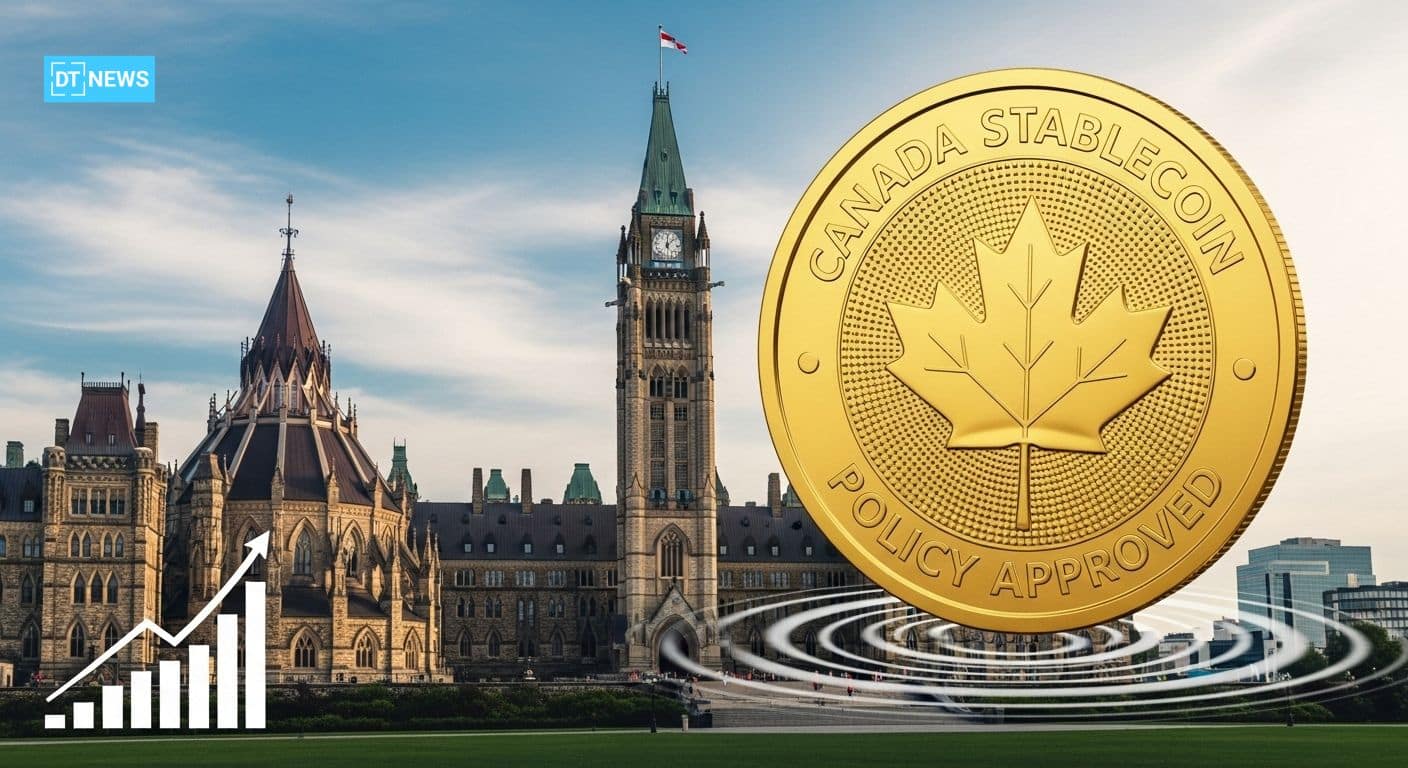This article was first published on Deythere.
Canada’s federal government has approved its 2025 budget setting a groundbreaking stablecoin policy that puts the Bank of Canada at the center of regulation.
This new structure requires strict reserve backing, solid redemption rules and protections around risk, cybersecurity and data.
By having the central bank regulate the issuers of stablecoins, it hopes to give a boost to modernize Canada’s payment system and bring transparency to a rapidly expanding digital asset class.
What the New Stablecoin Policy Demands
Fiat-backed stablecoins are to be regulated under the 2025 budget in Canada through a dedicated legal framework.
Issuers are required to hold one-to-one reserves in, essentially, either the reference currency (e.g. CAD) or other high-quality liquid assets (HQLAs), according to DLA Piper analysis. These stablecoin issuers will have to give instant redemption, meaning that those who want can cash in their stablecoins at par value whenever they so desire.
Additionally, issuers will have to put in place risk-management systems including cybersecurity and data-protection measures required to protect user information and financial stability.

The policy also contains national security protections, making it clear that these must be innovative and safe.
Role of the Bank of Canada
The Bank of Canada will be responsible for the enforcement of the new regime. The budget includes C$10 million over two years beginning in fiscal 2026-27 to establish oversight mechanisms.
Following initial launch, the ongoing administrative costs would come to C$5 million per year and be fully recovered via fees collected from regulated stablecoin issuers.
This has put the central bank in the position of being not just a watchdog, but a creator of a new regulatory frontier.
By getting in line this way, the Bank of Canada can make certain that issuers will be held to particularly stringent standards and it can audit stablecoin usage in real time.
Legal Changes and Legislative Framework
To make the Canada stablecoin policy legally binding, Ottawa intends to modify the Retail Payment Activities Act (RPAA).
Such an action will place stablecoin-based payment services under federal regulation and increase scrutiny where regulatory authority had previously been fragmented.
This piece of legislation is particularly relevant because is brings stablecoins closer to payments infrastructure, and not just speculative assets.
Legal experts view this as Canada accepting digital tokens on the modern financial rails, rather than merely crypto curiosities.
While there are gaps, some legal analysts have also noted that the budget does not specify how bank-issued stablecoins will be regulated compared with non-bank issuers.
This places industry participants on lookout for the second round of consultation.
Industry Reaction: Support Tempered by Caution
Canada’s newly delivered guidance on regulating stablecoins has been seen as welcomed by the national crypto community.
Coinbase Canada CEO Lucas Matheson hailed the move as “a great step forward” but urged for an “interim path” to be created so that CAD-denominated stablecoins could move more swiftly towards launch.
Matheson also said that issuers should be able to distribute yield on stablecoin deposits, citing that a lockdown on yield can stifle adoption and competition.

These are changes that would enable Canada to capitalize on the potential of digital currency while keeping them competitive worldwide.
Crypto support extends beyond advocacy too.
Coinbase has previously invested in Stablecorp, the issuer behind QCAD, Canada’s fiat-pegged stablecoin. This is a huge vote of confidence in Canada’s on-chain future particularly when values are pegged to a regulated Canadian dollar stablecoin.
Conclusion: Payments, Innovation and Trust
The new Canada stablecoin policy is a change in how digital payments are handled in the country. By subjecting stablecoins to central bank oversight, the government indeed is bringing the national payments infrastructure into the 21st century.
The policy is intended to drive faster, cheaper and more inclusive payment alternatives across the country.
Consumer confidence is also a matter of concern. By establishing clear requirements for reserves, redemptions and risk management, the policy would also seek to foster confidence in stablecoins as safe and trustworthy instruments not speculative tokens.
Glossary
Stablecoin: A cryptocurrency, pegged to a fiat currency, designed to keep a stable value.
Fiat stablecoin: A stablecoin that is 100%-backed with government currency or financial assets.
Reserve backing: Assets held, such as cash or high-quality securities, to pay out the value of stablecoins that are in circulation.
Redemption: The option for holders to redeem stablecoins at any time and swap them back into the currency they were pegged to.
Retail Payment Activities Act (RPAA): Canadian legislation outlined in the RPAA, which regulates payment service providers.
Bank of Canada: The central bank responsible for monetary policy, and now stablecoin regulation.
Frequently Asked Questions About Canada Stablecoin Policy
What did Canada just approve in its 2025 budget with respect to stablecoins?
Canada passed a law governing fiat-backed stablecoins that establishes reserve backstops, redemption rights, and operational risk protections under Bank of Canada’s oversight.
Who will supervise stablecoin issuers?
The Bank of Canada will manage stablecoin issuers for which C$10 million was earmarked over two years, from set-up to continuous regulatory payments that can be recouped through issuer fees.
Is it permissible for stablecoin issuers in Canada to pay interest to users?
No. Non-bank stablecoin issuers would not be able to pay any “interest or yield” on their stablecoins under the new rule.
How has the cryptocurrency industry responded?
Industry leaders, including the CEO of Coinbase Canada, welcomed the policy but asked for faster paths to launching CAD-denominated stablecoins and permission to share yield.
When will this stablecoin system go live?
The legislation will come on consultation, with the regulatory rollout from fiscal 2026–27.



















































































































